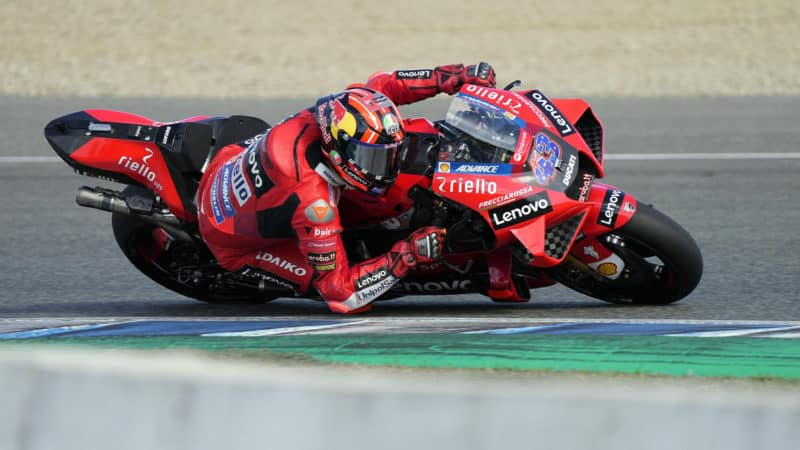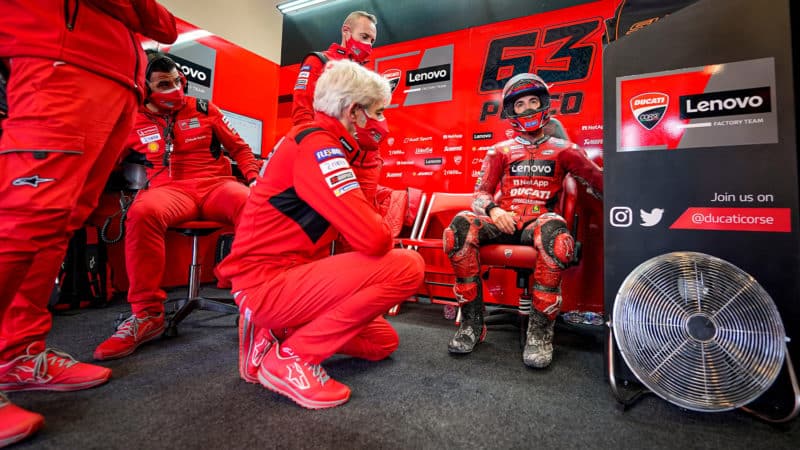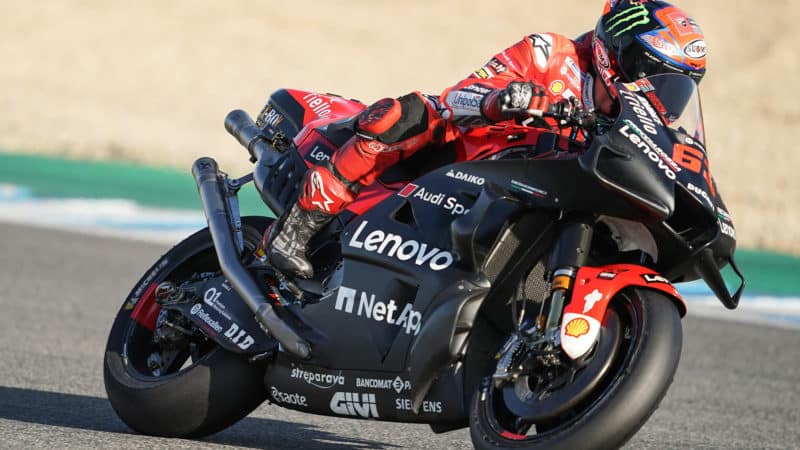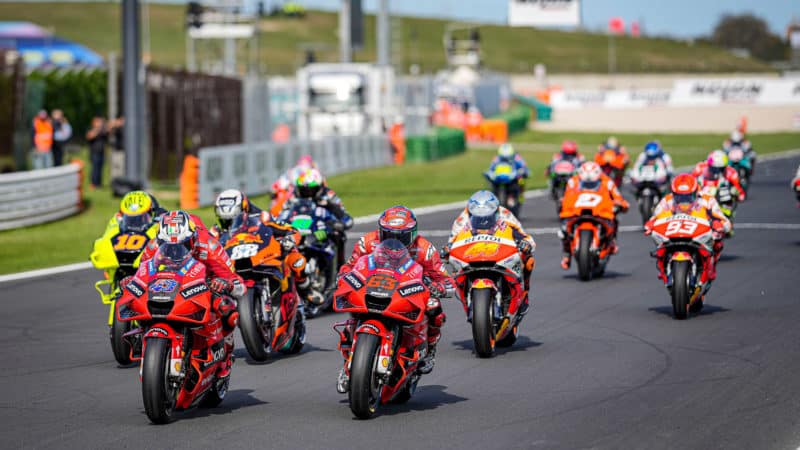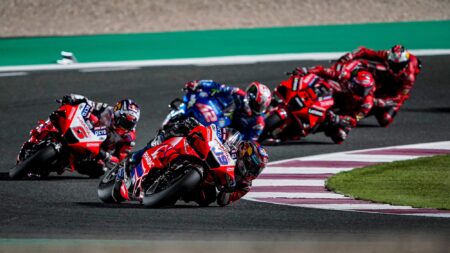Ducati’s current MotoGP journey began in 2015, when Dall’Igna designed his first Desmosedici.
“The bike we have now is a result of the work we’ve done since 2015, when we changed the bike completely, every single part,” adds Barana. “It’s been a long process, with many steps, partly because you have to test with your official riders to prove something is effective and for some years the opportunity to test with official riders has been very limited, so this slows down the process quite a lot.”
Bagnaia’s crew chief Cristian Gabbarini believes that Ducati took its final step forward when it put Bagnaia and Miller in the factory team.
“Ducati worked a lot on turning, because it was our weakest point, but also the riding style of Pecco and our other guys helps a lot to make the bike turn,” says Gabbarini. “For example, Pecco rolls into corners much faster than Andrea [Dovizioso, Ducati’s number one from 2013 to 2020].
“At Aragon [where Bagnaia won his first MotoGP race after a long duel with Marc Márquez] Marc said that Pecco looked like Dovizioso in front of him, but Pecco braked harder and especially rolled intro the corners a lot faster than Dovi.
“This isn’t just the bike, because we can’t make such a big difference, but we are able to help the riders do this more”
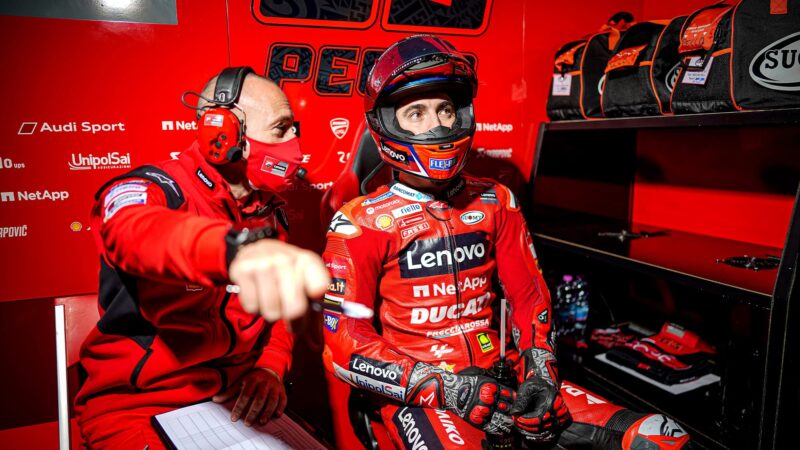
Bagnaia with crew chief Gabbarini: “Pecco is super-clever to immediately understand what we say”
Ducati
Dovizioso struggled with the Ducati following the 2020 introduction of Michelin’s softer-construction rear slick, which demands that riders replace their stop-and-go cornering technique with more corner speed.
“Dovi was super-good at stopping, turning and starting again, but he couldn’t use a lot of corner speed because that wasn’t his strong point, so now he is also struggling with the Yamaha,” adds Gabbarini. “So our new riders have helped us a lot – because if they are super-strong in corner speed they can also help us understand how to obtain an even better effect in this area.”
“Pecco brakes very, very, very hard! Marc starts braking and Pecco makes metres on him”
Gabbarini started working with Bagnaia when the youngster joined Pramac Ducati in 2019, after spending 2017 and 2018 with Jorge Lorenzo, who might’ve won the title for the Bologna brand if factory bosses hadn’t fallen out with him. And yet four years later Lorenzo is still helping Ducati.
“What was unbelievable was that when we started working with Pecco we immediately understood that his riding style is very, very similar to Jorge’s,” reveals Gabbarini. “He talked about the same problems on the bike and he has the same way of doing things on the bike, so me and Tommaso [Pagano, Bagnaia’s data engineer, who also worked with Lorenzo] realised we must check Jorge’s data a lot.
“This was helpful because Jorge at the end of his career at Ducati was in some ways a genius. So when Pecco had a problem we might say to him – no, Jorge used this line instead of this line, to make the exit better, or whatever. Pecco is super-clever to immediately understand what we say and to try it – you never have to tell him something twice.
“One of Jorge’s strongest points was that he could beat Marc on braking – nobody could overtake him on the brakes. So I told Pecco you must brake super-hard. Now Pecco brakes very, very, very hard! If you look at the onboard from Aragon you see Marc start braking and Pecco makes metres on him. Honestly, in 20 years in MotoGP this is the first time I’ve seen something like this.”
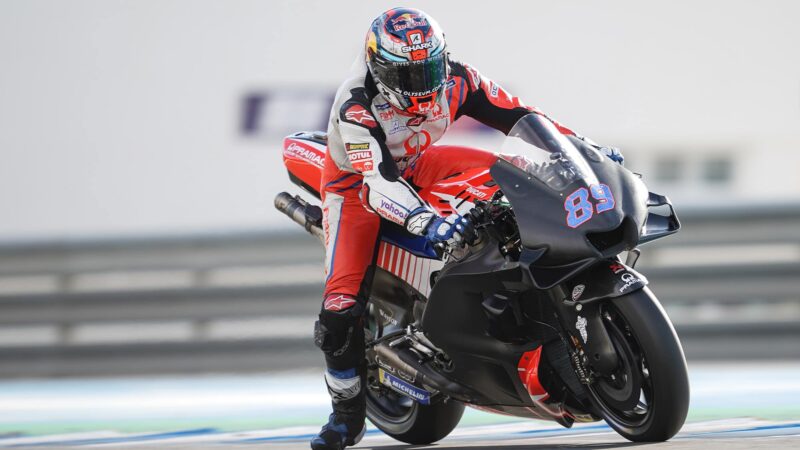
If 2021 Rookie of the Year Jorge Martin continues improving into 2022 he could be a real threat
Cormac Ryan-Meenan
At the end of last year Bagnaia had only one demand for 2022 – more agility. No surprise there, because the Ducati’s downforce aero makes the bike heavy to move around, which is why Ducati are evaluating a slimmer fairing for 2022.
“All our riders ask for more manoeuvrability, especially in fast corners, so Gigi is working hard on this,” says Gabbarini. “I think this will be one of the biggest things we will change on the bike. Otherwise it will be simple evolutions, because now many riders can be fast with the Ducati now.”
The other big change for Ducati in 2022 is sheer weight of numbers – a full third of the 24-rider grid will ride ‘Desmodiffusers’, including five GP22s (Bagnaia, Miller, Zarco, Jorge Martin and Luca Marini) and three GP21s (Enea Bastianini, Marco Bezzecchi and Fabio Di Giannantonio).

